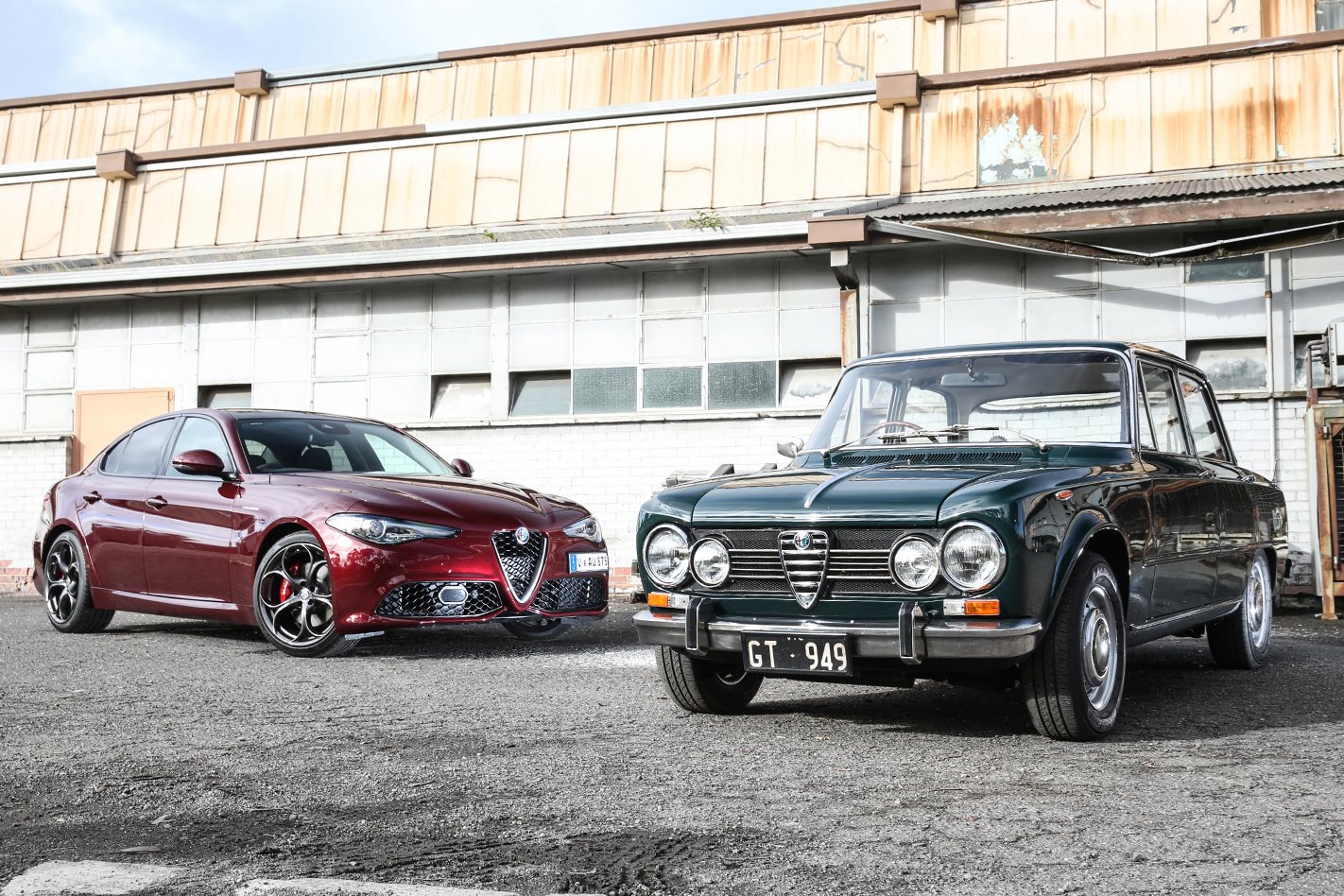FROM a high-point of undisputed reverence and sporting excellence in the 1960s and ’70s, Alfa Romeo’s gradual slide down the automotive spiral towards fashionable mediocrity has been a drawn-out and painful one, especially for true believers in the 107-year-old Italian marque’s mystique.
First published in the June 2017 edition of Wheels Magazine, Australia’s most experienced and most trusted car magazine since 1953.
But rising from the ashes of failed joint ventures and broken dreams comes a shining message of hope in the form of the Giulia. Rear-wheel drive and new from the ground up, courtesy of billions of development Euros, this medium-sized premium sedan (and its forthcoming Stelvio SUV offshoot) is what Alfa Romeo’s salvation depends on. No pressure, then…
This latter-day Giulia is Alfa’s first rear-drive sedan for 25 years, but derives its name from a one-time superstar – the original Giulia sedan, launched in 1962 and the progenitor of the most prized Alfa Romeo models of the modern era, including the 105-series coupes (1963-77), the rear-drive Spider (1966-93) and the slightly larger Berlina sedan (1968-77).
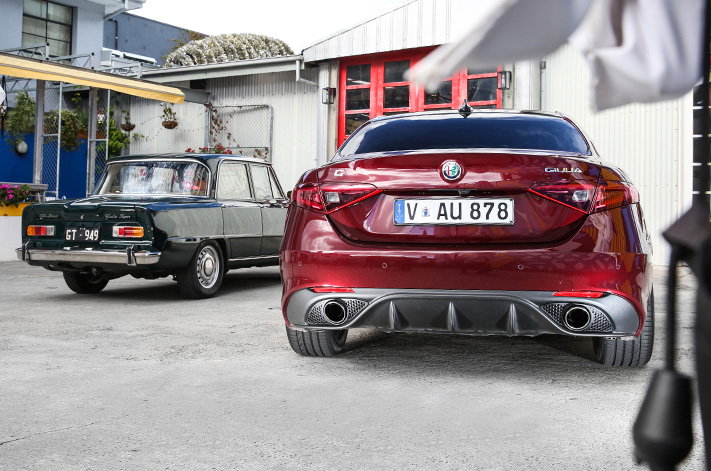
Alfa Romeo claims that the original Giulia sedan (1962-77) established five principles that its all-new namesake adheres to – Italian design; advanced technology; performance; lightness and efficiency; and a unique spirit – and there’s little reason to dispute much of that. The new Giulia was designed in-house at Centro Stile in Italy (tick), and incorporates loads of up-to-date tech to enhance its agility, efficiency and performance (tick, tick and tick).
But what about the spirit part? Without the twin-turbo V6 QV version’s trick torque vectoring and eye-widening thrust, will the four-pot Veloce expose some weaknesses in Alfa’s all-new ‘Giorgio’ platform and its game-changing ability for the Italian marque?
We know Alfa Romeo can do engines. Trying to think of a dud Alfa donk is like attempting to criticise Rome for being too old, and the Giulia Veloce’s feisty 1995cc turbo-petrol four certainly fits its sporting aspirations.
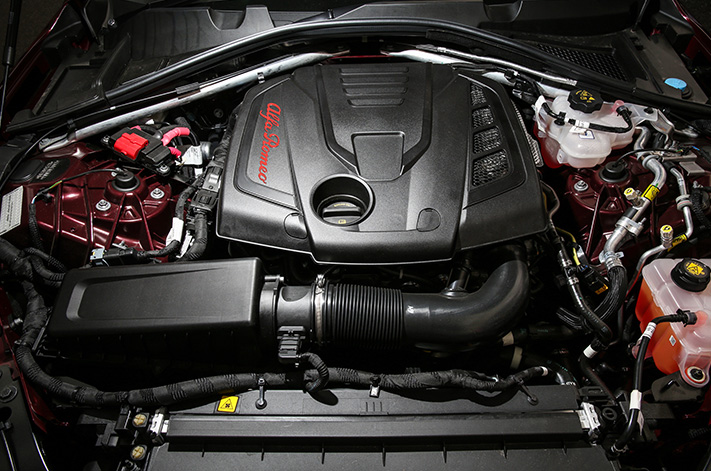
Mated exclusively to a slick ZF eight-speed automatic ’box in Australia (Europe also gets a six-speed manual), the Veloce’s punch is impressively urgent. Alfa claims the Veloce will crack 100km/h from rest in 5.7sec (versus 5.8sec for an Audi A4 2.0TFSI quattro and 6.3sec for an Ingenium-engined Jaguar XE 25t), yet its performance is about more than just numbers. It’s about bottling the induction music for which great Alfa Romeo engines are famed, and making it work in 2017.
Thankfully, the Veloce hits the mark, but not in the manner you might expect. There’s no trick acoustic plumbing trying to mimic the post-4000rpm blare of the old twin-Weber, twin-cam Giulia Super. Instead, the Veloce serves up an ample platter of forced-induction meat, overlaid with a subtly sporting rasp that sounds both natural and satisfying, uncorrupted by low-class turbo whistle.
With its organ-type aluminium throttle pedal mashed to the floor, the Veloce upshifts at a conservative 5600-5700rpm. And if you flick it into manual mode – via either the correctly configured gear lever (forward for a downshift, back for an upshift) or a pair of exquisite bladed-metal shift paddles fixed to the steering column – the drama is all over by 6100rpm. Unlike its naturally aspirated ancestor, which thrives on being caned like a racehorse, the eight-speed Veloce whips through its tightly-stacked ratio set with rapid-fire precision, without the need to point its tacho needle towards numeral ‘7’. And it works.
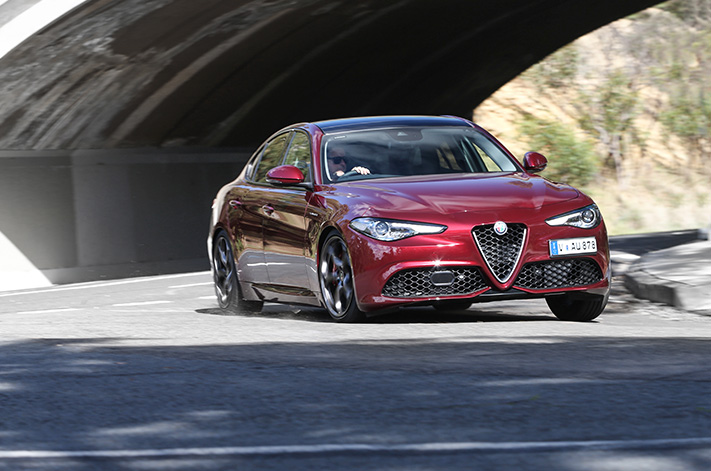
For starters, the Veloce rides! Even wearing beautiful charcoal 19s clad with bespoke AR-stamped Pirelli P Zeros – 225/40R19 front, 255/35R19 rear – the Giulia Veloce eviscerates the vertical pitch and over-firm brittleness of some German rivals, instead charging down the Jaguar XE’s path towards sporting suppleness. And it even feels that way with its DNA drive-mode selector – now fashioned into an HSV-style dial rather than the chintzy old plasti-chrome flick lever – switched to ‘Dynamic’.
Traversing the amusement-park lumpiness that’s the westbound section of Melbourne’s Calder Freeway, the superb body control of the Veloce’s firmest setting is a revelation. It’s one of the few sport modes that can actually be enjoyed on Australian roads, and yet if the surface starts to get really craggy, you simply hit the button in the centre of the dial for ‘soft’ damping. In a stroke of rare genius (but really just common sense), the Giulia Veloce maintains its firmer steering weighting, sharper shift programming and throttle response, and broader ESC threshold, yet instantly delivers a more absorbent, impressively level ride, without the need to scroll through numerous screens to set up an ‘Individual’ mode.
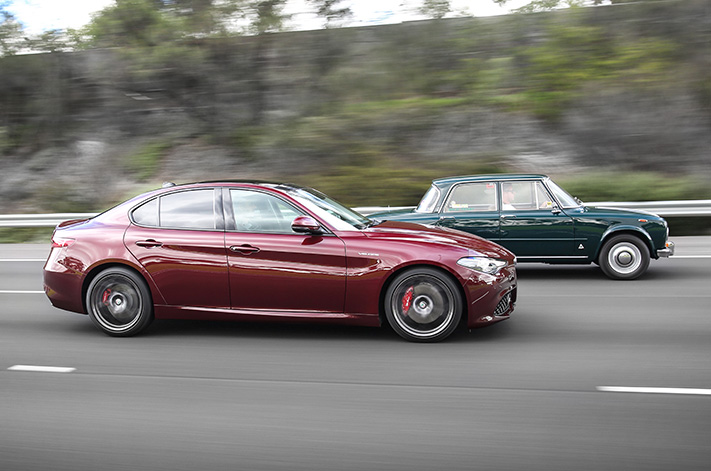
Otherwise, the Giulia Veloce is near-impeccable. It doesn’t feel anywhere near as large as its leggy 2820mm wheelbase might suggest, shrink-wrapping around you like every great driver’s car should. Even the view over its delectable three-spoke steering wheel (with Ferrari-style start button, which we love) and its interestingly shaped dash somehow feels more intimate than it should for a car of this size.
Once you start to guide its front wheels into any kind of turn, be it at traffic lights in the city or through a 45km/h bend at close to double the speed, there’s a wonderfully consistent connection between your fingertips and where the Veloce’s nose is pointing. Despite just 2.3 turns lock-to-lock, it doesn’t take long to synchronise your brain with the small steering input required, yet the Giulia somehow strings these direction changes together with delicious seamlessness.
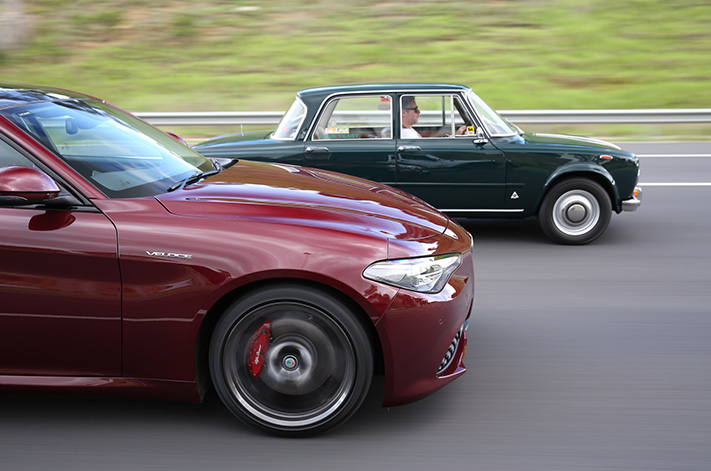
Choose a cornering line and the Giulia Veloce almost magnetically sticks to it. Keep adding throttle and it’ll keep astounding you with its poise and purchase, all the while absorbing the surface beneath with composed surety, and damping out unwanted noise without isolating its driver from the experience. Yet it all comes back to the seamlessness of that steering. The amount of time it took Alfa Romeo to bring the Giulia to market has clearly paid dividends in the superb cohesion of its dynamics, not to mention its hugely impressive refinement.
It’s somewhat surprising, however, that its brake feel isn’t to the same standard. You often find yourself adding more travel than you thought you’d need to its rather wooden-feeling pedal, as though it could use a bit more servo assistance. Alfa claims 38.5m stopping distance from 100km/h (against a superb 32m claim for the QV), which is below average for this type of car.
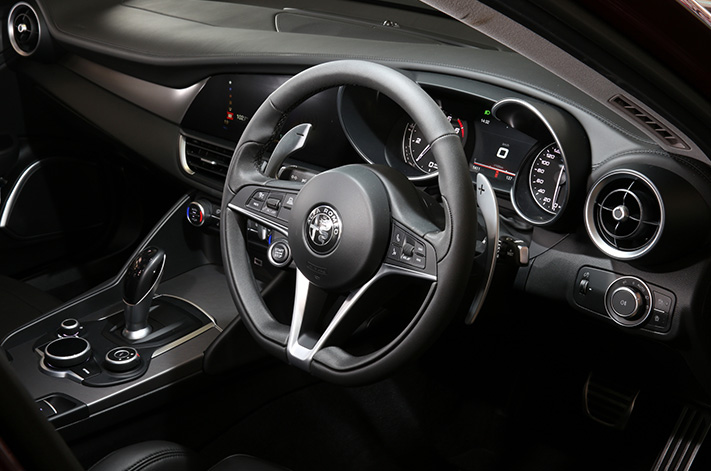
The Veloce’s sports front seats offer six-way electric adjustment (meaning no proper cushion tilt) and electric bolster adjustment. Initially, they feel too flat, and combined with a slightly odd floor shape – it rises up towards the seat, like the shallow end of a pool – there’s a concern the Giulia’s driving position may fall into the flawed trap of so many Italian cars from the past. More time behind the wheel reveals it’s a moot point, especially compared to the high-pedal, distant-wheel relationship in the old Giulia Super. ‘Italian Ape’, they called it, in much less racially sensitive times, yet my 5ft 10 frame finds both driving positions malleable and comfortable.
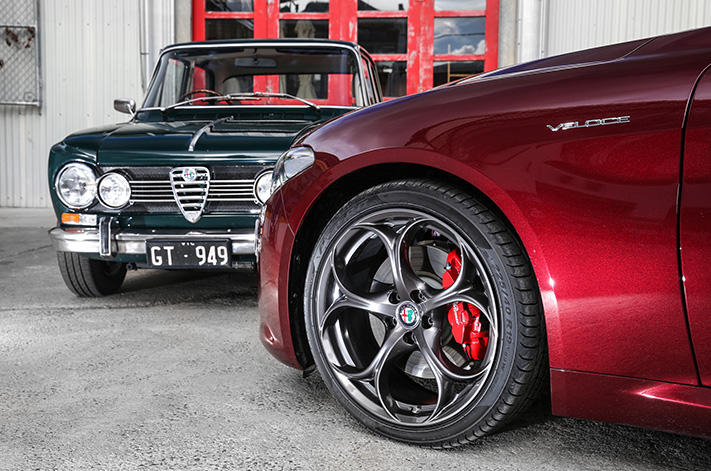
But in terms of the things that matter – voluptuous styling, striking street presence, superb dynamic performance, and sporting accelerative spirit – the Giulia Veloce nails it. Packed to its headlining with equipment for the $71,895 ask, from both the outside and the inside, the Veloce appears to be worth tens of thousands more than it is.

Whoever said you sometimes need to hit rock-bottom to climb back to the top probably wasn’t expecting it to take this long for Alfa Romeo. But if the new Giulia is anything to go by, the Italians are back in a big way. Benvenuto all’Italia!
Super Dooper!
Giovanni Patone is Italian to the core. Not only did he welcome our invitation to bring along his gorgeous ’70 Giulia Super with enthusiasm, but he egged us on to drive it hard. With a 1570cc twin-cam, twin-Weber four and a sweet-shifting five-speed manual gearbox, the original Giulia remains a surprisingly quick car.
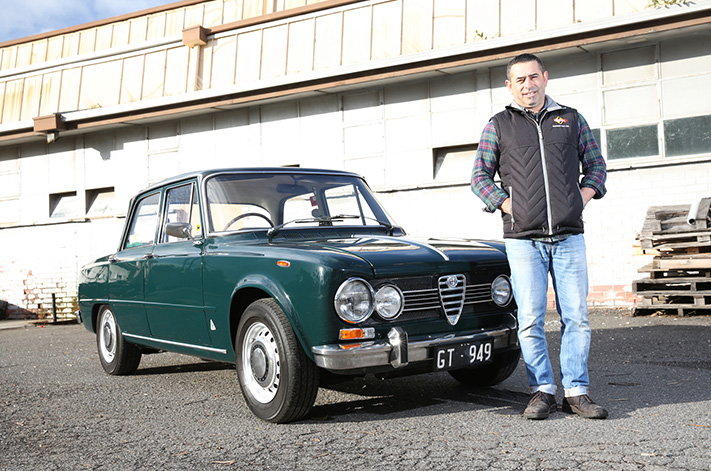
But it hangs on gamely, and the harder you drive it, the sweeter its balance.

